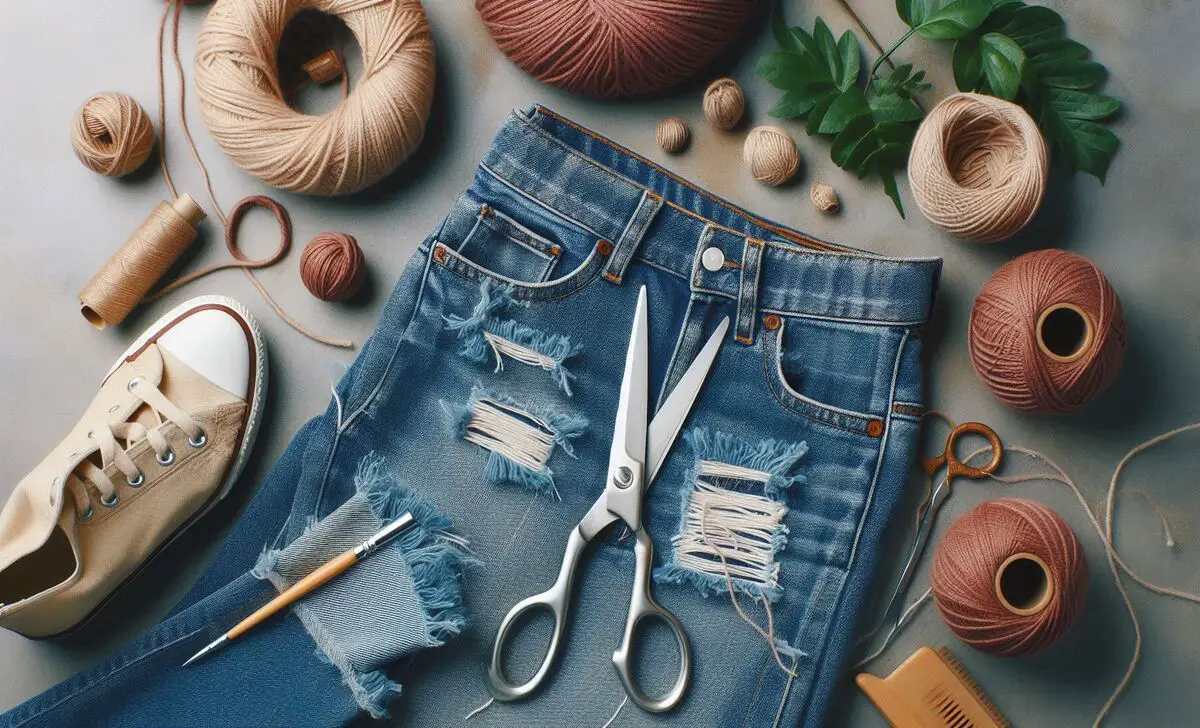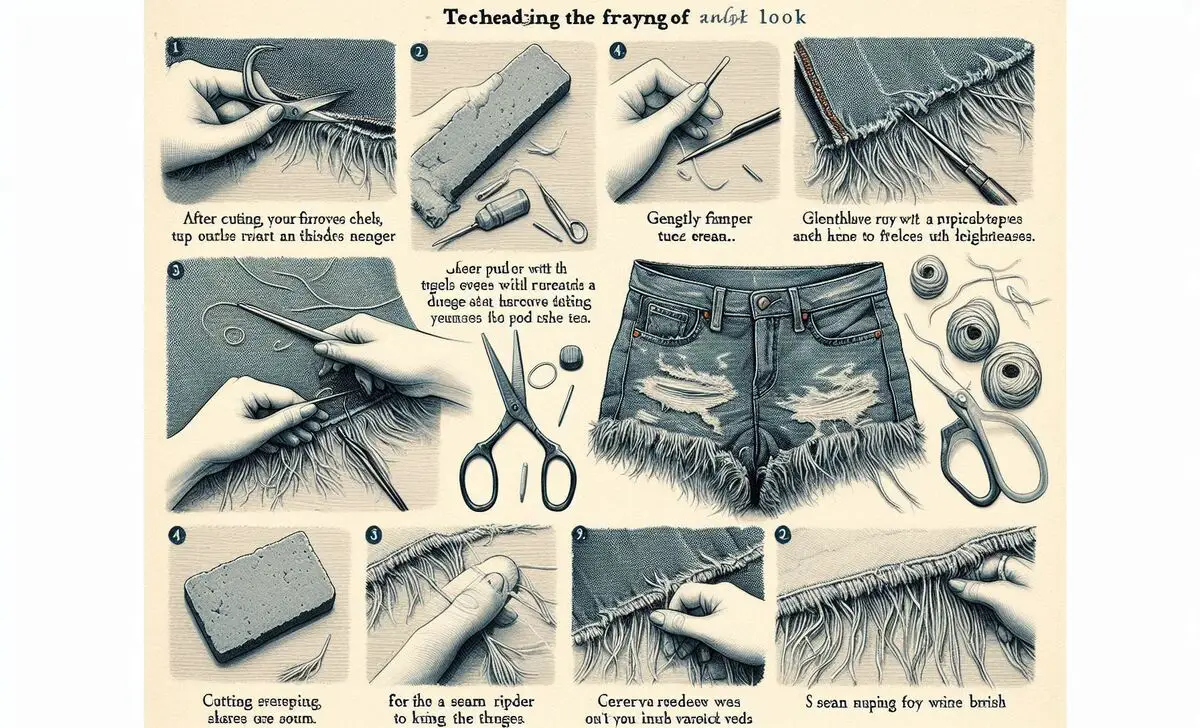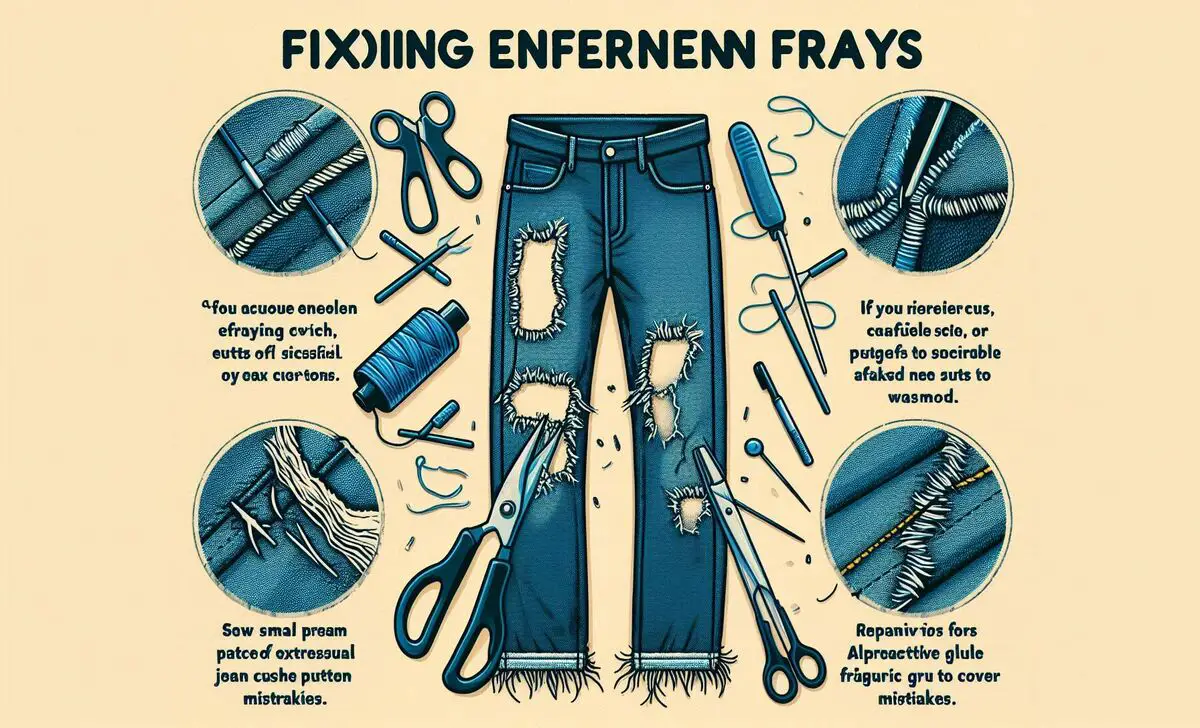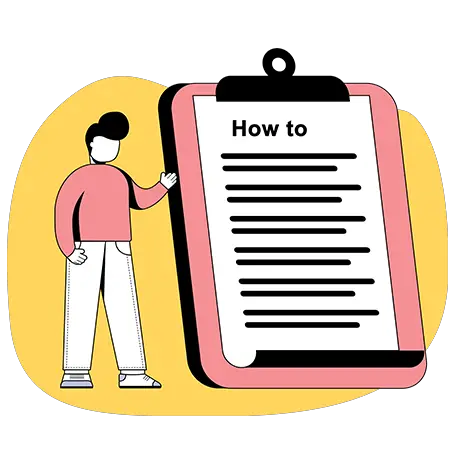Fraying jeans are a fantastic way to give your old denim a fresh, stylish update. Whether you want to breathe new life into a pair of worn-out jeans or customize a new pair, learning how to fray jeans with scissors is a skill that can transform your wardrobe. This DIY technique not only adds a trendy, distressed look to your jeans but also allows you to express your personal style.

How To Achieve A Stylish Frayed Look With Scissors?

Fraying jeans can turn a basic pair of denim into a stylish, trendy statement piece. Whether you want to give your old jeans a new look or create a unique pair from scratch, knowing how to fray jeans with scissors is useful. Let’s walk you through the process step-by-step, from preparation to the final touches, to ensure your jeans look effortlessly cool.
1.Materials And Tools Needed
To fray your jeans, you’ll need a pair of sharp scissors. Fabric or sewing scissors work best for precise cuts. You might also need a ruler or measuring tape for accurate marking. For extra fraying, consider using a pumice stone, tweezers, or a seam ripper. These tools can help you achieve different frayed effects, from subtle distressing to more intense rips.
2.Choosing The Right Pair Of Jeans

Choose jeans made from 100% cotton denim for the best fraying results. Stretchy or blended fabrics may not fray as well and could result in uneven edges. Skinny jeans, straight-leg jeans, and boyfriend jeans are all excellent choices for fraying. Avoid highly distressed jeans or those already showing signs of wear, as the fraying may not look as clean.
3.Setting Up Your Workspace
Lay down a protective surface such as an old tablecloth or cutting mat. This will help keep your workspace clean and prevent damage to your surfaces. Use fabric or paper under your jeans to catch loose threads or denim debris. This will make cleanup easier and keep your workspace tidy.
4.Measuring And Marking

Mark where you want the fraying to begin with a ruler or measuring tape. Lightly draw lines with a fabric marker or chalk to guide your cuts. Consider the desired look for your jeans. Longer frays create a more dramatic effect, while shorter frays offer a subtle distressed appearance.
5.Cutting The Jeans
Start by cutting small slits or horizontal lines where you marked. Use sharp scissors to ensure clean cuts. Avoid cutting too much at once to maintain control and precision.
6.Techniques For Creating The Frayed Look

After cutting, use your fingers or tweezers to pull at the threads and create a frayed texture. Gently rub the edges with a pumice stone to enhance the distressed look. For more pronounced fraying, use a seam ripper to carefully pull out threads or a wire brush to add texture. Experiment with different tools to find the effect you like best.
- Cutting: Use sharp scissors to make small cuts along the hem or desired fraying areas. Start with shallow cuts and gradually increase the depth.
- Fraying: Rub the cut edges with a pair of tweezers or a seam ripper to loosen and pull out fibers, creating a distressed effect.
- Washing: Wash and tumble dry the jeans to enhance the frayed look by further softening and unraveling the edges.
- Rinsing: For a more pronounced fray, rinse the jeans under water to loosen the fibers before drying.
- Layering: Create a layered frayed effect by making multiple parallel cuts and fraying them separately.
7.Washing And Drying
Wash your jeans in cold water to avoid shrinking. Turn them inside out to protect the frayed edges and maintain their appearance. Avoid using bleach, which can weaken the denim. Air-dry your jeans to prevent further fraying from heat. Lay them flat or hang them to dry. Avoid using the dryer, as it can cause excessive fraying or shrinkage.
Troubleshooting Common Issues

- Fixing Uneven Frays
If you notice uneven fraying, trim the edges carefully with scissors to even them out. You can also use a seam ripper to adjust the fraying pattern.
- Repairing Mistakes
For accidental cuts or excessive fraying, sew small patches of denim on the inside of the jeans to cover mistakes. Alternatively, you can use fabric glue to fix any tears.
Conclusion
Fraying jeans with scissors is a stylish and enjoyable way to give your denim a personalized update. By carefully following these techniques, you can transform your jeans to reflect your unique taste and enhance their visual appeal.
Just remember to handle your jeans gently throughout the process and follow proper care to keep them looking sharp and fresh. This DIY approach not only revitalizes your wardrobe but also allows you to create one-of-a-kind pieces that stand out with a custom, distressed look.
Frequently Asked Questions
1.How Do I Ensure My Frayed Jeans Look Even?
To ensure even fraying, mark your cutting lines carefully and cut slowly. Use a ruler for precise measurements and check your progress frequently.
2.Can I Fray Jeans Without Scissors?
Yes, you can use a seam ripper or a pair of tweezers to fray your jeans. These tools help pull out individual threads for a controlled fraying effect.
3.How Do I Maintain The Frayed Look After Washing?
Wash your frayed jeans in cold water and air-dry them to preserve the frayed edges. Avoid the dryer to prevent additional fraying.
4.What Type Of Scissors Are Best For Fraying Jeans?
Sharp fabric or sewing scissors work best for fraying jeans. They provide clean cuts and help you achieve a neat, controlled fraying effect.
5.Can I Fray Jeans Using A Different Technique?
Yes, you can use a pumice stone, wire brush, or sandpaper to create different fraying effects. Experiment with various techniques to achieve your desired look.
6.How To Fray The Bottom Of Jeans With Sandpaper?
To fray the bottom of jeans, start with old jeans or denim shorts. Lay them flat on a surface and measure the desired length using measuring tape and chalk. Use sharp scissors to cut the pant leg straight. For a distressed look, take steel wool to create rips and frayed edges. You can also use a seam ripper to pull vertical and horizontal threads for a more frayed hem.
7.How Do You Stop Fraying At The Bottom Of Your Jeans?
To stop fraying at the bottom of your jeans, use a seam ripper to remove loose threads and achieve a straight line. Cut the jeans to your desired length with sharp scissors, and if you want a frayed look, leave extra fabric. For a clean finish, consider sewing a straight stitch along the hem using blue thread.










